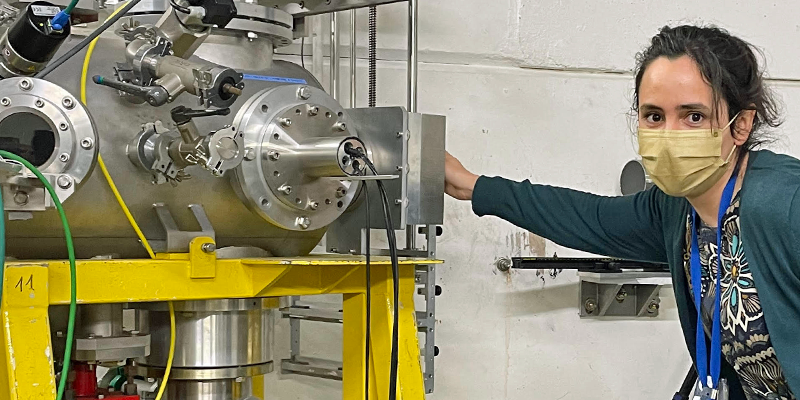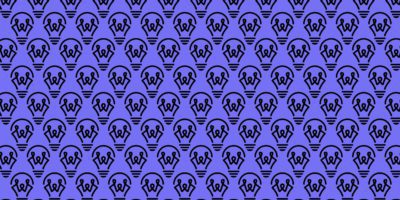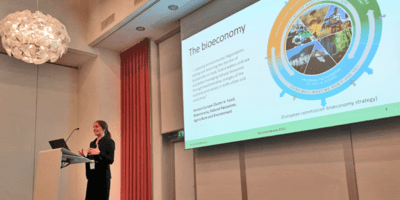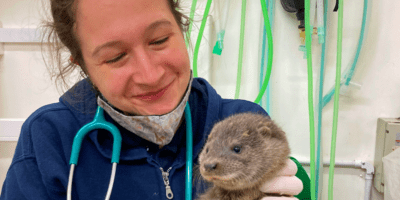Silvana Ferreira Da Silva Miranda, a radiobiologist and PhD student at the Radiobiology Unit of the Belgian Nuclear Research Centre, is a speaker at Soapbox Science Brussels. In her Soapbox talk, she will explain the effects of the space environment on the human immune system and what can be done to help astronauts maintain their health during missions. The title of her talk is “Space! But make it safe. How to make space missions safer for astronauts” and it will take place on 25th June 2022 at Place de la Bourse in Brussels.
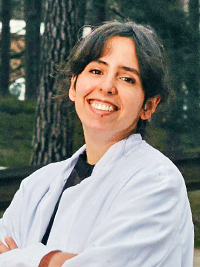
“We see how an increase in skepticism towards science and scientists can have real consequences in our society.”
From treating cancer to researching radiation in space
I studied radiotherapy and worked as a radiation therapist in a hospital for six years before I enrolled in the Master’s degree that would lead to my current career in research. Since the beginning of my professional career, I knew I wanted to further my knowledge in the radiobiology field and transition into a more research-oriented career.
Initially, it made sense for me to do this in relation to oncology (the study of cancer). However, an eye-opening course I attended at SCK CEN, in Mol, Belgium, showed me how transversal radiobiology actually is (with lots of things intersecting) and what I learned about space radiobiology sort of clicked into place. I knew that I wanted to pursue a career in this field. So, I’ve been at SCK CEN since November 2020 and I’m now in my second year of the PhD that is a collaboration between SCK CEN and the University of Gent.
Radiation is the showstopper when it comes to space exploration

Nowadays, I am focusing my research on studying the effects of the space environment on the immune system. Radiation is the showstopper when it comes to space exploration in the sense that the levels astronauts are exposed to are up to ten times higher than what we experience on earth, so in order to understand the effects of this exposure we irradiate immune cells and assess what happens to them, but the space environment is not only radiation!
The gravity levels are different — astronauts in the International Space Station (ISS) experience gravity levels close to 0 (microgravity) and if we want to go to the Moon, the gravity level there is about six times less than the one we have here on Earth. So, we also combine the irradiations (the process by which an object is exposed to radiation) with simulated altered gravity and we add into the mix stress hormones because we want to mimic the increased stress levels astronauts experience during their missions.
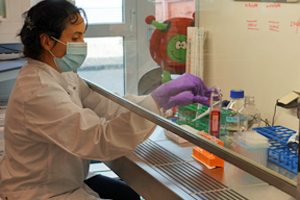
My days vary between lab work doing experiments and desk work, analysing data and studying. Since space radiation is unique in its composition and energy, it is difficult to simulate in the lab. For this, we have to go to special irradiation facilities, with particle accelerators.
This pretty much involves transporting our entire lab (all the materials and machines) to be able to perform our experiments. It requires a lot of preparation and work but fortunately, I can count on an amazing team that helps me during these experimental campaigns, turning them into great experiences. And it also helps that we often have to travel to another country, so it is also a great opportunity to discover a new city.
Bouncing back from the impacts of the pandemic
When I started my PhD project, the COVID-19 pandemic-related restrictions were still strong. This limited our collaborations with other institutions and delayed our irradiation campaigns. We are also still suffering from some supply shortages.
In the first year of my PhD all my training and courses were held online which limits networking. It also restricted the possibility of engaging with other people about our research. As a multidisciplinary research institute, we have a considerable number of PhD students, but we hardly could get together and discuss our topics. Also, before the pandemic, we used to hold open days to engage the public from the region where the institute is located, but due to the pandemic, we are only now bringing this back to life.
So, I think that the impact has mainly been in relation to interaction and engagement which are very important for science to develop, but it is gradually getting back to normal now and I’m very glad to see that.
Science is not about ‘the distant person in the lab coat’
I have always been interested in science communication but attending conferences can sometimes be daunting. You see the same format of presentations everywhere and most of the time it is difficult to retain the messages being transmitted. The problem is that the ideas can get lost in the templates that scientists must follow in order to fit all the work developed over the course of years into a 10 to 20-minute presentation. This is in relation to sharing science with a scientifically oriented audience. When we step out of this environment, the challenge is even bigger.
I’ve always thought that there must be a way to make this process less ‘painful’ for the presenters and more appealing to the audience by breaking the norms. We see how an increase in skepticism towards science and scientists can have real consequences in our society. This has many possible explanations but I believe one of these is the difficulty the general public has relating to ‘the person in a lab coat’, distant from them, possessing all the knowledge, which is too complicated to explain anyway, so why bother?
These are the two main reasons I am so interested in science communication. To do my part and share this with as many people as I can, with different backgrounds, and still be able to get my message across. Soapbox Science encapsulates all of this! I first heard about it from my supervisor, who encouraged us to participate. Since then, I have been gathering up the courage to apply by looking at other talks and stories they shared.
Encouraging the public to participate in the conversation
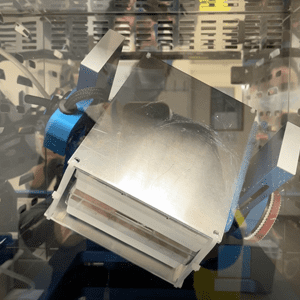
In my Soapbox Science talk I will focus on my PhD topic and what I have been already doing over the course of the last year. I will explain what is the space environment and what happens to the astronaut’s body and how our T cells work and might be affected by the conditions in space, but my goal with this talk is more of an inspiring one. I will try to engage with the audience by not just showing what I do but allowing them to participate in the conversation and hopefully inspire some of them to pursue a career in science.
As humanity’s space exploration efforts are now gathering pace with the aim of putting the first women on the moon in a few years’ time, our research could contribute by providing a piece of the puzzle for the improvement of the health conditions for astronauts in future space missions. It will also help shine a light on immune-related diseases on Earth.
Share and share alike
I hope I can encourage more people to share their stories and take science communication to even higher levels. My talk at Soapbox Science Brussels will be on 25th June 2022 at Place de la Bourse in Brussels and I’m already looking forward to it.
Beyond my talk, I am also very eager to see how other researchers tackle the challenge of sharing their research in the Soapbox Science context. I’m also excited by the opportunity to network with other women and discuss what our role is in society, as role models for other aspiring STEM enthusiasts.
International Space Station image: NASA, Public domain, via Wikimedia Commons

